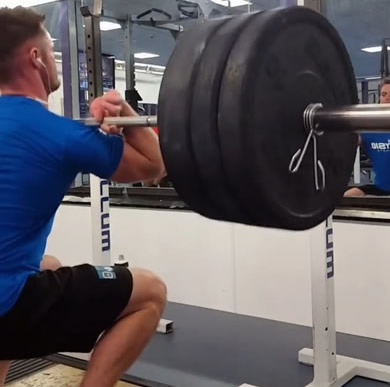Resistance Training; The Basics

Resistance training is a fundamental part of a healthy body and lifestyle, many people ignore it from their fitness regimes and many don't understand how to utilise this type of training in the correct way to get their desired results. This is a very basic guide to help you include resistance training into your life so that you can reap the benefits that it brings.
So, why use resistance training? There are many reasons to use resistance training and here are a few to name; increased muscular strength and power, increased muscular strength endurance, increased muscle growth, increased proprioception (body awareness/co-ordination), increased blood sugar control, increased circulation, improved blood pressure regulation, fat loss, improved body composition, improved balance, increased bone density, increased tendon and ligament strength, increased joint mobility, the list goes on and on! However, the theory is great but there are many various forms of resistance training that need to be put into correct practice for the full results/adaptations to occur.
Resistance training is used by many to achieve a variety of goals/outcomes. The three main results for whatever use they are put to are strength/power training, muscular hypertrophy and muscle toning/fat loss. Many choose one or a mixture of these training methods to achieve their personal goal. These particular goals are achieved by the load/resistance and selected repetition range. Strength training uses high loads and low reps e.g. 85-100% of their 1 repetition max (1RM), 1-5 reps and 90secs to 3min rest between sets this training is mainly used in sports conditioning and serious weightlifting. Muscular hypertrophy (muscle growth) uses moderate to high loads (70-85% 1RM) with typically reps from 6-12 and rest periods of 45 to 90secs between sets, this training is used by body builders or people generally looking to increase their muscle mass/size. Muscle toning and fat loss uses low to moderate loads (<70%) with high reps or 12+ and short recovery 20-60 secs. Studies show that an increase in muscle mass is generally accompanied by an increase in fat loss we will just go through the basics in this post.
How and what do you use when resistance training? The four most common methods are fixed resistance machines, cable machines, free weights and often forgotten body-weight exercises. Each has their own benefit and suitability to individuals. Fixed are good for beginners, elderly or people recovering from injury as they train the muscles specific to the exercise and are low risk to injury. Free weight exercises are good because they recruit more muscle fibres and require core stabilisation to perform the exercises, these are more for advanced trainees as they are of higher risk to injury as the trainee has to control the weight at all time. Cable machines are a mixture of fixed and free weights as they require more stabilisation but are still in a fixed movement pattern, these can be used to progress towards free weights from machines. Body weight exercises are great for all as they provide everyday specific movements and no external load to control reducing their risk to injury.
So here are some technical pointers...
- Always, always, always think about tensing or "engaging" your core and abdominal muscles, this is to protect the spine from damage and allows you to produce more power.
- Always find a weight that you can control your form throughout the entire chosen rep range, the last one or two reps should be a struggle but not impossible without cheating technique.
- Always control the weight down when on the eccentric or lowering phase of the exercise as this is where the muscle building action of the exercise takes place generally a tempo of 2-3 seconds down and 1-2 seconds up is a basic guide to go with when resistance training.
- Compound exercises like squats, deadlifts, chest press, leg press, chin ups, shoulder press, dips and various rows should always be included into a program for a good all round physique opposed to concentrating on exercises like chest flyes and bicep curls.
- Always balance the muscles you train e.g. don't just do chest press and avoid rows as muscular imbalances will lead to poor posture and possible injuries.
- Try to use a variety of reps and loads within your target goal when training a particular muscle group as the body has a variety of fibre types that react to different reps and loads and variety will stimulate more to respond to the training improving results.
- Avoid spending longer than an hour in the gym, 45 mins of concentrated training is enough.
I hope this has been a useful read and that each point is clear and understandable, if anyone has any queries or questions please get in touch and I will be happy to answer.
Thanks,
Oliver Ody

